RQM+ Medical Device and In Vitro Diagnostic Blog
Topic: Food & Beverage
Subscribe to our blog
Sorry, no listings found for that Search. Try changing your fiter and search again.
-

Polymer Failure Analysis with Jordi Labs, an RQM+ Company
on 14 May 2024 | By Kevin Rowland, Executive Vice President & General Manager of Jordi Labs, an RQM+ Company
Failure analysis is a critical field used to detect chemical and mechanical defects in polymeric materials, pinpointing the factors that have contributed to or directly resulted in product failure. This analytical discipline plays a pivotal role in enhancing the properties and...
Read More -

What is Dynamic Mechanical Analysis Used For?
on 24 April 2020 | By Mark Jordi, Ph.D., RQM+ Principal Advisor
Dynamic mechanical analysis, sometimes abbreviated to DMA, is a workhorse technique used to investigate the various mechanical properties of materials as a function of frequency, temperature, and time. The goal is to ultimately get an in-depth assessment of the stress and strain...
Read More -

Working Principles and Applications of Scanning Electron Microscopy
on 17 February 2020 | By Mark Jordi, Ph.D., RQM+ Principal Advisor
Scanning electron microscopy (SEM) is an advanced analytical tool that vastly outstrips the capabilities of traditional light microscopy. The standard array of magnifying lenses in a compound microscope enables sample magnification by up to 1000x, using visible wavelengths of...
Read More -

What GMP Means in Pharma
on 11 September 2019 | By Mark Jordi, Ph.D., RQM+ Principal Advisor
The acronym GMP refers to the good manufacturing practices promoted by the U.S. Food and Drug Administration (FDA) under the remit of the FD&C Act; which mandates strict levels of quality assurance at every stage of the pharmaceutical manufacturing chain. Although GMP principles...
Read More -

How to Conduct Molecular Weight Analysis
on 20 August 2019 | By Kevin Rowland, RQM+ Director of R&D
The molecular weight of proteins, natural and synthetic polymers is a clear indicator of product performance and activity. To control product performance across a broad range of applications, the understanding of molecular weight determination is key.
Read More -

What is Polymer Molecular Weight?
on 21 June 2019 | By Mark Jordi, Ph.D., RQM+ Principal Advisor
Polymer molecular weight (MW) is the molecular mass of a polymer chain. While small molecules of the same elemental composition all exhibit the same molecular weight, polymer chains exhibit different characteristics. These chains are compounded from multiple small molecules that...
Read More -

What is Elemental Analysis Used For?
on 22 May 2019 | By Mark Jordi, Ph.D., RQM+ Principal Advisor
Elemental analysis is a process in analytical chemistry in which a sample of material such as water, minerals and bodily fluid is analyzed to ascertain its elemental composition. Elemental analysis can be qualitative, determining which elements are present or quantitative,...
Read More -

How to Choose a GPC Column
on 27 February 2019 | By Taryn Meade, RQM+ Director of Biological Evaluation Consulting
Gel Permeation Chromatography (GPC) is a powerful technique that provides a direct measurement of molecular weight, a critical property in characterizing natural and synthetic polymers. There is no universal GPC system with the capability to separate every polymer-based...
Read More -

Analyzing Solar Cells via X-ray Diffraction
on 1 February 2019 | By Mark Jordi, Ph.D., RQM+ Principal Advisor
X-ray diffraction is a powerful method of characterizing crystalline materials in a non-destructive manner. It is often used to identify and quantify crystalline phases by illuminating samples with a beam of X-rays and analyzing the distinctive diffraction patterns emitted from...
Read More -

Protein Characterization, Identification & Purification
on 25 January 2019 | By Kevin Rowland, Executive Vice President & General Manager of Jordi Labs, an RQM+ Company
Protein characterization is an incredibly broad field of study that encompasses a wide range of analytical methods and techniques. Although biochemists have made enormous strides in protein analysis, the process of identifying and purifying novel proteins remains a daunting...
Read More -
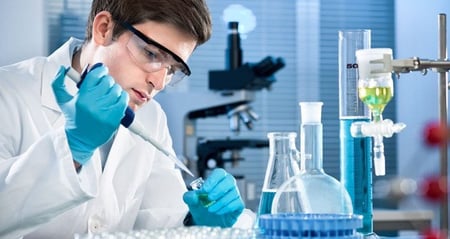
The Working Principles of Gel Permeation Chromatography
on 19 December 2018 | By Mark Jordi, Ph.D., RQM+ Principal Advisor
Gel permeation chromatography (GPC) is a powerful analytical technique used to separate dissolved molecules by size, based on their elution from a column filled with a porous gel. I t can be described as a type of molecular sieving chromatography, where samples are separated...
Read More -

Polymer Testing: Polyethylene and End of Life Management
on 26 October 2018 | By Mark Jordi, Ph.D., RQM+ Principal Advisor
Polyethylene is the most pervasive synthetic polymer used worldwide, comprising over a third of the world’s annual plastic manufacturing output. Production of plastics has come under significant environmental scrutiny in recent years with estimates suggesting that as much as...
Read More -

Using Transmission Electron Microscopy to Analyze Engineering Materials
on 10 October 2018 | By Kevin Rowland, RQM+ Director of R&D
Transmission electron microscopes (TEMs) are the big guns of the microscope world, capable of peering far beyond the diffraction limit of conventional optical microscopes to resolve sub-nanometer details and probe the atomic structure of materials. [1] The most sophisticated...
Read More -

What is Thermal Gravimetric Analysis?
on 8 October 2018 | By Mark Jordi, Ph.D., RQM+ Principal Advisor
Thermogravimetric analysis, or thermal gravimetric analysis (TGA), is a method of determining the overall mass of a sample as a temperature-dependent property. Mass change as a function of temperature is a fundamental property of many materials as they degrade and lose volatile...
Read More -

Typical Molecular Weights of Common Polymers
on 18 April 2018 | By Mark Jordi, Ph.D., RQM+ Principal Advisor
No two polymers are the same. They exhibit different properties depending on key characteristics, such as their molecular weight. Polymer molecular weight (MW) describes the molar mass distribution of a polymer chain, which determines the weight of the macromolecule itself. This...
Read More -
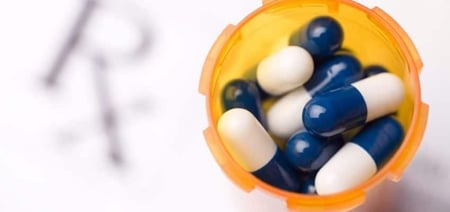
What is Transmission Electron Microscopy?
on 13 April 2018 | By Mark Jordi, Ph.D., RQM+ Principal Advisor
Transmission electron microscopy (TEM) is a form of microscopic analysis that transmits a high-energy beam of electrons through an ultrathin sample specimen. This provides imagery based on the transmission/attenuation of electrons, which is then magnified for direct observation...
Read More -

Polymer Failure Analysis with RQM+ Lab Services
on 30 March 2018 | By Mark Jordi, Ph.D., RQM+ Principal Advisor
Failure analysis is used to detect chemical and mechanical defects and deficiencies in polymer products, which have contributed to or directly resulted in failure. It is a critical analytical field that can improve the efficiency and profitability of polymeric products,...
Read More -

A Beginner’s Guide to Dynamic Mechanical Analysis
on 14 February 2018 | By By Kevin Rowland, RQM+ Director of R&D
Dynamic Mechanical Analysis (DMA) describes a procedure in which the mechanical properties of materials are measured as a function of time, temperature, and frequency. In basic terms, dynamic mechanical analysis involves the application of a stressor on a target such as the...
Read More -

Food Toxicology: Testing Food Contact Materials
on 1 February 2018 | By Kevin Rowland, RQM+ Director of R&D
A ubiquity of food contact materials exists today, with virtually all the food we consume coming packaged in some form or another. This has the multifaceted benefit of preserving food goods: maintaining quality for longer transit and storage periods; reducing the risk of...
Read More -

Measuring Polymer Exemptions with Gel Permeation Chromatography
on 15 January 2018 | By Mark Jordi, Ph.D., RQM+ Principal Advisor
The US Environmental Protection Agency (EPA) was established to protect human health by providing regulatory oversight and implementing decisive action where required. Changes in manufacturing protocol and emergent materials mean that the powers of the EPA are routinely subject...
Read More -

Overcoming Uncertainty in E&L Testing
on 27 November 2017 | By Kevin Rowland, RQM+ Director of R&D
E&L testing is carried out on plastic products to understand which molecules, such as antioxidants, slip agents, surfactants lubricants, etc. are released from a polymer system. Undertaking E&L testing is a critical step of the medical device and pharmaceutical safety...
Read More -

Polyethylene (PE) High Temp GPC Separation Example
on 18 October 2017 | By Mark Jordi, Ph.D., RQM+ Principal Advisor
New generation Resolve Columns (7.8 mm x 300 mm) are produced to allow separation over the molecular weight range from 500 to 12,000,000 g/mol (PS equivalent) for 13 µm particle size packing materials. Polyolefins often have broad molecular weight ranges characterized by high...
Read More -

E&L: Key Principles of Extractables & Leachables Analysis
on 14 July 2017 | By Mark Jordi, Ph.D., RQM+ Principal Advisor
E&L testing is a critical process in pharmaceutical packaging development and medical device manufacturing. Unlike many other forms of laboratory analyses, it cannot be broken down into a series of simple methods. This is primarily due to the complex and infinitely variable...
Read More -

Titrimetry in Wine Analysis
on 19 April 2017 | By Kevin Rowland, RQM+ Director of R&D
Titrimetry is an important analytical process used to determine the quantity of specific constituents in a mobile phase. It is a type of volumetric analysis where the analyte is quantified as a function of equivalence, which is expressed as a titration curve with an end point...
Read More -

E&L Testing: Methods of Chemical Characterization
on 10 April 2017 | By Mark Jordi, Ph.D., RQM+ Principal Advisor
Extractables and leachables testing – E&L testing for short – is the process of identifying and quantifying the molecules which can be released from plastic-containing products. This blog post discusses the many different analytical techniques which are used to analyze sample...
Read More -
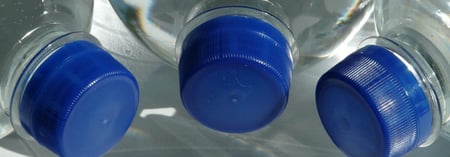
Exploring the Importance of Polymer Analysis
on 4 April 2017 | By Mark Jordi, Ph.D., RQM+ Principal Advisor
Polymers are ubiquitous materials used in construction, engineering, and countless commercial products. These applications can be as varied as the polymeric materials used in medical devices, pharmaceuticals, food and beverage packaging, and personal care cosmetics. They are...
Read More -

Contamination Detection: Particulates and Residue Analysis with RQM+ Lab Services
on 31 March 2017 | By Mark Jordi, Ph.D., RQM+ Principal Advisor
Process and quality control in the pharmaceutical industry requires highly-discerning contaminant detection, including particulates and residue analysis. These elements are among the primary forms of contamination in the pharmacological industry, and can arise from a broad range...
Read More -

What is ISO 10993 Used for?
on 29 March 2017 | By Mark Jordi, Ph.D., RQM+ Principal Advisor
ISO 10993 comprises a series of international standards for the evaluation of biomedical devices and associated biological risk. ISO 10993 includes specific standards for certain material classes, such as ceramics or metals, as well as evaluation and testing within a...
Read More -

Carrying Out Particle Analysis Using DLS
on 20 March 2017 | By Mark Jordi, Ph.D., RQM+ Principal Advisor
There are various well-established methods of carrying out particle analysis including dynamic image analysis (DIS), static light scattering (SLS), and sieve analysis—sometimes called gradation testing. These methodologies can often be complementary, each providing information...
Read More -

UV-VIS Absorbance and Protein Characteristics
on 16 February 2017 | By Mark Jordi, Ph.D., RQM+ Principal Advisor
One of the most common methods for analyzing protein characteristics and measuring protein purity in solution is to observe the sample’s absorption of ultraviolet (UV) wavelengths of light. Proteins that contain the appropriate amino acids are absorbent to light on the...
Read More -

An Overview of Toxicological Risk Assessments
on 25 January 2017 | By Taryn Meade, RQM+ Director of Biological Evaluation Consulting
What is a Toxicological Risk? Toxicological risk measures the probability of an adverse effect being caused by a given compound. This covers effects such as skin irritation from topical treatments to more serious risks such as a material being carcinogenetic or fatal if ingested.
Read More -

How to Develop a Biological Evaluation Plan
on 17 November 2016 | By Taryn Meade, RQM+ Director of Biological Evaluation Consulting
A biological evaluation plan is developed to systematically assess whether a device intended for use in humans poses an unacceptable biological safety risk.
Read More -

Engineering Plastics via Gel Permeation Chromatography
on 14 October 2016 | By Kevin Rowland, RQM+ Director of R&D
Gel permeation chromatography (GPC) is a well-known method which is used for characterizing polymers according to their molecular weight distribution. The gel permeation chromatography analysis of engineering plastics at high temperatures needs specialized instruments and...
Read More -

Preparing for New Regulations of Elemental Impurities in Drugs
on 1 August 2016 | By Mark Jordi, Ph.D., RQM+ Principal Advisor
Drug and dietary supplement manufacturers face an increasingly complex set of elemental impurity standards, which we will detail here.
Read More -

What is the Karl Fischer Titration Method?
on 6 July 2016 | By Mark Jordi, Ph.D., RQM+ Principal Advisor
At RQM+ Lab Services , our team of expert lab technicians utilize a range of testing methods to deliver precise results for specific customer requirements. Where water determination is the primary ob j ective, we often deploy the Karl Fischer titration method; the...
Read More -

7 Methods of Assessing Protein Purity
on 14 April 2016 | By Mark Jordi, Ph.D., RQM+ Principal Advisor
Just one mammalian cell is made up of a combination of many distinct proteins, often to the degree of thousands in varying concentrations. The variety and magnitude of protein types within just micro volumes of a single sample micro present substantial challenges for...
Read More -
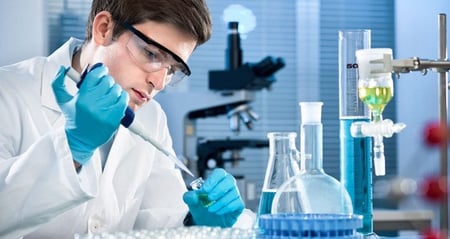
Biological Endpoint Testing in Biocompatibility Evaluations
on 1 February 2016 | By Taryn Meade, RQM+ Director of Biological Evaluation Consulting
Biological safety evaluations are designed to assess whether a product is safe for its intended use depending on its composition. For example, an evaluation of a cardiovascular implantable device would need to assess potential risks associated with long term contact with blood...
Read More -

Chemical Characterization Testing of Medical Devices
on 4 January 2016 | By Taryn Meade, RQM+ Director of Biological Evaluation Consulting
The Food and Drug Administration (FDA) partially recognized the ISO 10993 guidance making it one of the most important for the chemical characterization testing of medical devices.1 ISO 10993 outlines all of the necessary steps for regulatory compliance to use new or existing...
Read More -

Common Mistakes in Extractables and Leachables Analysis
on 2 November 2015 | By Kevin Rowland, RQM+ Director of R&D
An important step in determining the biological compatibility and safety of a medical device as required by ISO 10993 is chemical characterization. Extractables and leachables testing is a vital but complex part of this. There is no one-size-fits-all approach that can be...
Read More -

Determination of Protein Molecular Weight
on 7 August 2015 | By Kevin Rowland, RQM+ Director of R&D
Determining the structural, chemical and functional properties of proteins is of vital importance to an increasing range of biopharmaceutical and life science markets. This is conducted repeatedly throughout the research and development (R&D) process for initial characterization...
Read More -

Christmas Tree: Artificial or Real
on 15 April 2015 | By Kevin Rowland, Executive Vice President & General Manager of Jordi Labs, an RQM+ Company
Making the choice between a real or ‘fake’ Christmas tree can be a tough family decision. While there are many reasons to choose artificial (no needles, doesn’t dry out, cheaper over time), possibly the best reason is safety.
Read More -

What Extractable and Leachable Compounds are Found in Syringes?
on 27 March 2015 | By Mark Jordi, Ph.D., RQM+ Principal Advisor
Extractables and leachables are chemicals that can be extracted from a product such as a syringe and deposited into the product it is housing. This can be either in the presence of a solvent or through direct contact over an extended period of time. An extractable and leachable...
Read More -

Product Deformulation: Reverse Engineering with RQM+ Lab Services
on 11 March 2015 | By Mark Jordi, Ph.D., RQM+ Principal Advisor
Product deformulation is a complex analytical process designed to uncover the specific chemical identity of finished goods. Chemists take the product of interest, break it down into its constituent parts, separate those into distinct entities, then analyze both the major and...
Read More -

Applications of Thermal Gravimetric Analysis
on 10 March 2015 | By Mark Jordi, Ph.D., RQM+ Principal Advisor
Thermo gravimetric analysis (TGA) is a thermal analysis technique used to quantify the overall mass of a sample as a temperature dependent property. The change in mass as a function of temperature is a key property in a range of materials because they lose volatile components as...
Read More -

E&L For Bis(2,4-di-tert-butylphenyl)-phosphate (bDtBPP)
on 6 March 2015 | By Mark Jordi, Ph.D., RQM+ Principal Advisor
Bis(2,4-di-tert-butylphenyl)-phosphate (bDtBPP) has been the subject of much discussion in the area of Extractables and Leachables testing for single use bioprocess systems.
Read More -

Product Deformulation: A Step-by-Step Guide to Reverse Engineering
on 10 December 2014 | By Mark Jordi, Ph.D., RQM+ Principal Advisor
Chemical reverse engineering is an extremely valuable process for those looking to protect their intellectual property from manufacturing issues or patent infringements. It is also deployed to help manufacturers maintain a competitive edge through targeted product analysis. Each...
Read More -

Common Causes of Polymer Failure
on 1 December 2014 | By Kevin Rowland, RQM+ Director of R&D
Understanding how and why materials degrade and ultimately fail is a critical step in the research and development (R&D) process. Compared to the lifespan of traditional engineering materials, polymers tend to fail in comparatively short timeframes. It is one of the reasons that...
Read More -

Contaminant Analysis: How to Interpret Particulate Matter
on 7 October 2014 | By Kevin Rowland, RQM+ Director of R&D
Particulate contamination analysis using microscopy and spectroscopy methods can identify and mitigate contamination in chemical, consumer products, industry or processes. Particulate analysis is the first stage in resolving contamination issues that could be potentially...
Read More -

New Trends in Analytical Chemistry – The Corona Charged Aerosol Detector (CAD)
on 17 September 2014 | By Kevin Rowland, RQM+ Director of R&D
The world of liquid chromatography has come a long way since the first online detectors for HPLC systems became available. At that time sixty some years ago, refractive index and conductivity detectors were all that was available, but neither provided the sensitivity that would...
Read More -

The Basics of Polymer Analysis: Techniques & Solutions
on 12 May 2014 | By Mark Jordi, Ph.D., RQM+ Principal Advisor
Given the level to which plastics, rubbers, and other materials have impacted modern life, it is easy to see the importance of in-depth polymer analysis. By exploring critical parameters like molecular weight (MW), structure, morphology, and thermal characteristics, chemists can...
Read More -

Risk Assessment Strategies in Extractables and Leachables
on 6 December 2013 | By Kevin Rowland, Executive Vice President & General Manager of Jordi Labs, an RQM+ Company
Risks assessments are a key element in extractables and leachables testing. There are many factors involved in ascertaining the specific risks and how this ultimately impacts the biocompatibility of a medical device.
Read More -

5 Key Elements of GMP in the Food Industry
on 4 December 2013 | By Kevin Rowland, Executive Vice President & General Manager of Jordi Labs, an RQM+ Company
Good manufacturing practice (GMP) is a critical part of the quality assurance and control (QA/QC) pipeline for food contact materials, from primary packaging through to kitchenware. Although GMP principles were established by the US Food and Drug Administration (FDA), they were...
Read More -

Molecular Weight Analysis: How to Measure MW?
on 22 November 2013 | By Mark Jordi, Ph.D., RQM+ Principal Advisor
Analyzing the molecular weight of both natural and synthetic polymers is extremely complex, and almost impossible to carry out with exactness. Unlike elemental analysis – which focuses on the chemical composition of samples under test – molecular weight analysis considers the...
Read More -

A Systematic Study of Response Factor Variation for Extractables and Leachables
on 11 September 2013 | By Kevin Rowland, Executive Vice President & General Manager of Jordi Labs, an RQM+ Company
Chemical analysis for leachables is one of the the primary methods used to assess the risk to patients and consumers from substances which leach from pharmaceutical packaging, medical devices and food packaging. A number of high-profile incidents have demonstrated that...
Read More -
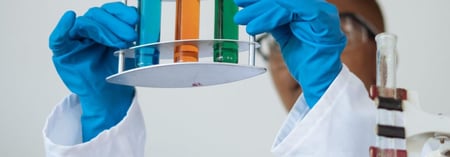
What are Extractables and Leachables?
on 3 July 2013 | By Mark Jordi, Ph.D., RQM+ Principal Advisor
Container systems for drug products should not release any chemicals which can build up in quantities that could create a risk of toxicity or impact the stability or efficacy of the drug. Extractables and leachables refer to compounds which can be either extracted or leached...
Read More -

How We Conduct ISO 10993 Medical Devices Evaluations
on 23 April 2013 | By Kevin Rowland, RQM+ Director of R&D
The goal of ISO 10993 is to protect patients from biological risks arising from the use of medical devices. The standard covers testing for genotoxicity, carcinogenicity, cytotoxicity and a variety of other areas of concern. While the standard covers specific areas of testing to...
Read More -

Titrimetry: A Brief Overview
on 20 January 2012 | By Kevin Rowland, RQM+ Director of R&D
At RQM+ Lab Services, we pride ourselves on our scope of expertise. We rely on a fully grounded comprehension of long-standing and cutting-edge chemical testing methods. This enables us to deliver results via a limitless range of finely tailored analytical workflows. Our PhD...
Read More -

The Working Principles of Dynamic Light Scattering
on 4 January 2012 | By Kevin Rowland, Executive Vice President & General Manager of Jordi Labs, an RQM+ Company
Dynamic light scattering is a fundamental technique in particle measurement and characterization. It is widely used to illuminate the dimensions of particles in samples as well as their biomechanical and chemical characteristics under distinct conditions.
Read More
GLOBAL BOTTOM CTA INSTRUCTIONS:
To display custom copy instead of global copy in this section, please go to Show Global Content for Bottom CTA? toggle in the "Contents" tab to the left, toggle it off, save, and then REFRESH the page editor, the custom text will then show up and ready to be edited.
Turning the global content back on will be the same process, go to the toggle and toggle it back on, save and refresh!


